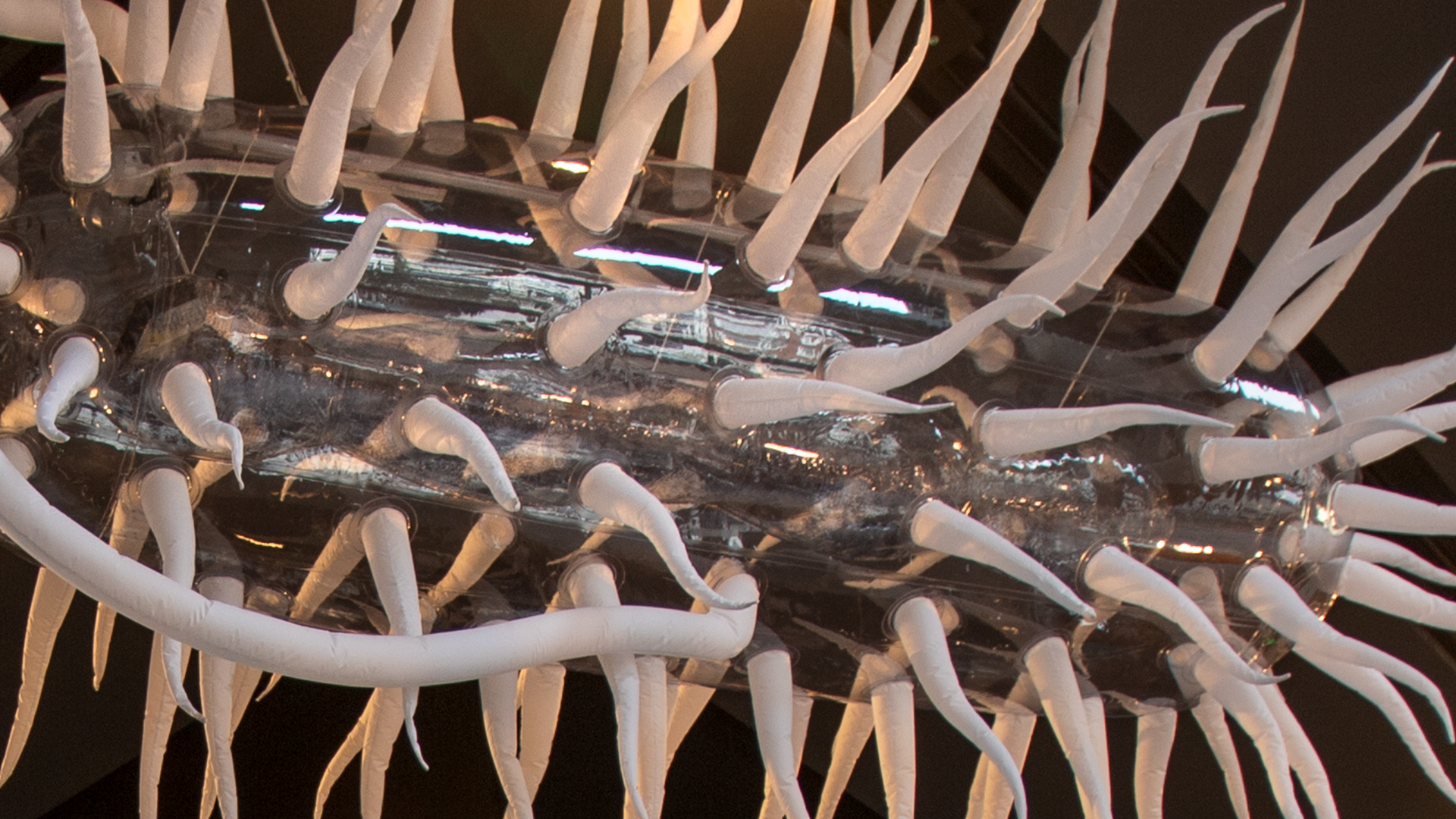Dizzying scale perception
This gigantic sculpture was created by artist Luke Jerram and built with the help of an air balloon manufacturer. Previously, he conceived a huge water slide in Bristol, installed street pianos in cities all over the world and designed the glass models of various pathogens in Micropia. ‘The artwork is an experimental object to contemplate, but also to allow the audience to experience dizzying scale perception,’ said Jerram. ‘Does the bacteria change our sense of scale when we stand next to it? Does it look creepy, beautiful, comical or alien? Will the audience be attracted by it, or repelled by it?’
Million times larger
The E. coli is seven metres long, making it over a million times larger than the actual bacteria . If a person were to stand next to this bacteria, they would be more than two thousand kilometres tall. E.coli bacteria move up to 15 times their length per second. If they were as large as this artwork, they would move at a speed of 378 km per hour.
Model type
This work of art was also made to reflect on the importance of bacteria in our lives. As a human you have more bacteria in your body than human cells, including E. coli. In addition, E. coli is of vital importance to medical research. This bacteria has been used as a model type since 1927, for example in the field of DNA. An advantage of this type is that it multiplies quickly. As a result, scientists cultivate many generations in a short time. The genome has been fully mapped, too. All of this makes this bacteria extremely suitable for science.
Curious portrait
‘Bacteria are the simplest form of free-living organisms and they are found all over the world, from the deepest oceans to the most arid deserts and even in the clouds. Bacteria were the earliest form of life on our planet, and therefore this work of art can be regarded as a curious portrait of our ancient ancestors,’ said Jerram. Yet it can also be connected to possible life beyond our planet. ‘If there is life in our solar system , then it will probably look like this.’

